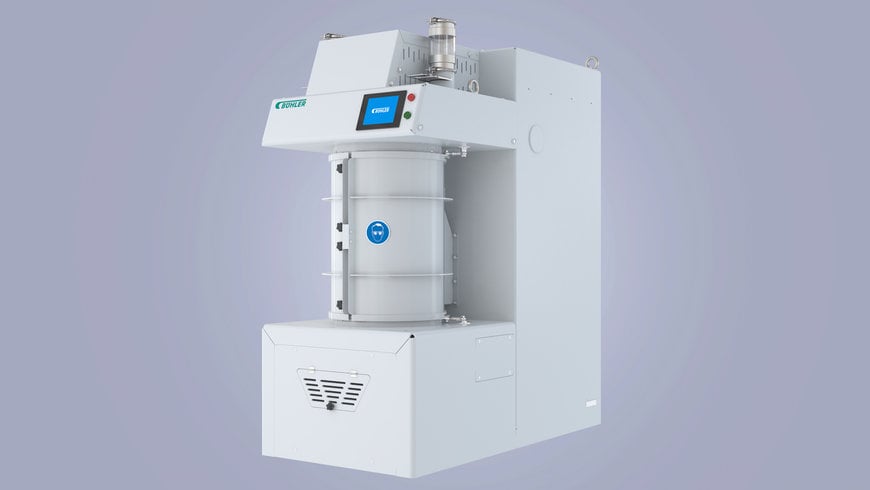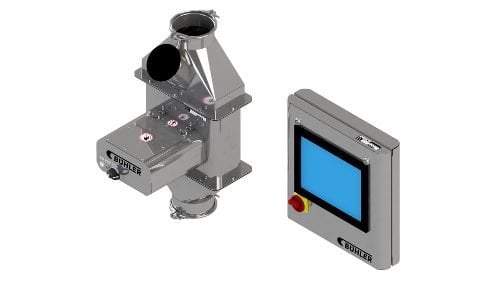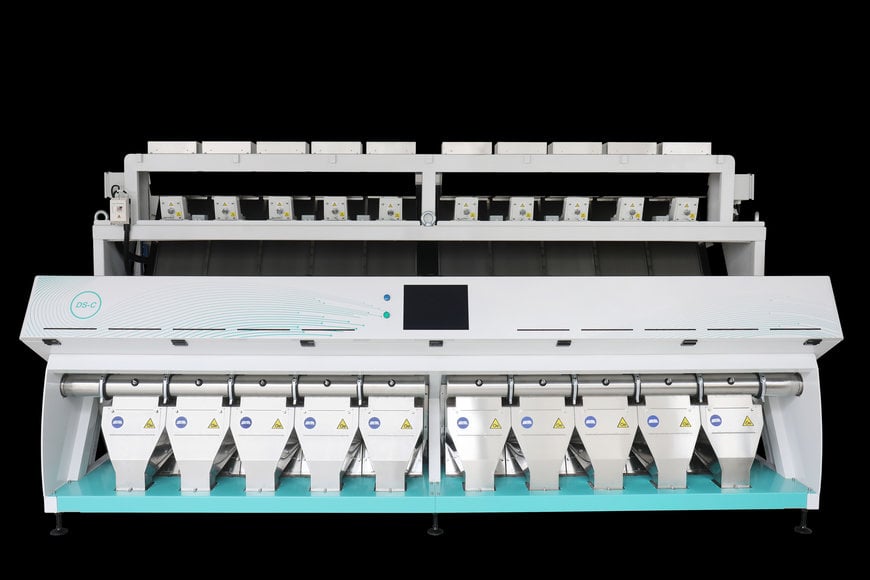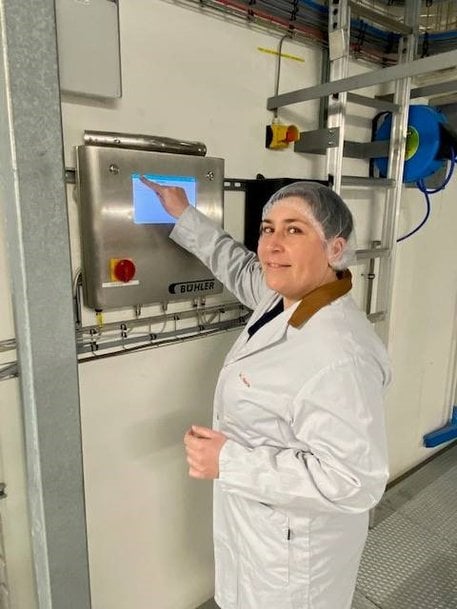www.magazine-industry-usa.com
11
'21
Written on Modified on
Connected data – the new heartbeat of the rice mill with unlimited potential
Introducing integrated intelligent technologies to optimize yield and increase profits for rice millers.

Bühler announces a major step towards the digitally connected rice mill of the future. The first rollout for integrated rice mills is entering the final stages. The initial setup connecting sorter, whitener, and sensors is set to change rice milling practices. Artificial intelligence and machine learning technology transform stand-alone technologies into one smart integrated system, reducing waste, saving energy, and consistently providing the best product quality. The results have tangible impact on the entire value chain. “Our digitally integrated system is the world’s first. Our solution-focused thinking connects the entire mill. The monetary benefits for our customers are tangible, while reduction in waste and energy consumption demonstrate our commitment to sustainable solutions,” says Johannes Wick, CEO Grains & Food at Bühler. Swiss rice miller Riseria Taverne SA is among the first visionary operators to successfully implement the system.
The rice processing industry faces many challenges: The growing global population and the rise of the middle class is driving up demand from consumers around the world who are increasingly quality conscious. At the same time, rice processors must manage huge variations in input with ever fewer skilled operators. Meanwhile, wider society is looking to all industries to become more sustainable. Bühler is meeting these challenges head on by connecting the optical sorter, whitener, and sensors into an integrated system powered by artificial intelligence and machine learning. “It’s this potent combination that lifts our capabilities to entirely new levels, equipping millers with the tools to operate even more efficiently and meet their customers’ ever-growing demand for consistent quality,” says Johannes Wick. “This isn’t a gradual improvement on already excellent performance but a real gamechanger. It represents a major leap towards the totally connected milling operation.”
Integrating whitener, sensors, and sorter to unlock actionable data
Bühler has been a pioneer in whitening technology for more than three decades, introducing the first vertical split-stone arrangement to the market. The new Automatic Whitener DRWC improves the process further by providing the best whitening performance through self-adapting whitening pressure. It also includes an overload protection mechanism and convenient recipe setting options that can be accessed via a touchscreen to provide maximum user-friendliness and efficiency. The shaftless design allows air to pass freely around rice kernels resulting in cooler and cleaner kernels, free from the bran. The emery wheel can be replaced easily, and the wear parts are highly durable.

Automatic rice whitener TopWhite
Bühler has defined the three quality parameters essential to the rice market: shine, smoothness, and whiteness. These, together with the percentage of broken rice, determine the quality and therefore the price that can be achieved with the final product. The RiceLinePro DROA sensor continuously assesses and keeps track of these characteristics in real time using complex machine learning algorithms. This not only standardizes the process, minimizing error and increasing consistency and reliability, but also reduces reliance on labor.

Inline sensor RiceLinePro
Bühler has long been at the forefront in developing optical sorting technology and is the undisputed market leader in this area. Bühler’s new DS-C Optical Sorter is one of the most advanced pieces of equipment in the entire processing line. It provides real-time product quality alerts which help to optimize the rice yield as well as adapt downstream processing technology settings. Features such as product live streaming and replay are part of digitalized production reporting. For example, for a typical optical sorter, ejection spikes often result in the loss of good product. Bühler’s integrated digital solutions detect these spikes as they happen. Where there is very little contamination there may be no need to re-sort the product and it can go straight to packing. At an average throughput of 3,500 kilograms per hour and 25 spikes a day, up to 32,000 kg of good product could be lost over a month if the errors are not detected and rectified. The monthly savings from increased visibility could be as high as USD 15,000.

The DS-C optical sorter
Think system! From corrective to proactive management
The digitally-connected technology provides mill operators with the insights they need to correctly adjust solution settings. Over time, the intelligent system is capable of adjusting autonomously. Where millers were once left to take corrective action after an incident occurred, they can now prevent costly reprocessing steps and proactively manage the entire process. With these advances, the miller can optimize operating costs, quality and yield, all of which have a direct impact on the profit of the mill. The product can be marketed with confidence along the entire value chain from miller, trader, and retailer to the end consumer at the optimal price point. Consumers are assured they are buying the best quality available.
The system is currently being tested at Riseria Taverne SA, the largest rice mill in Switzerland. “The new setup consisting of digitally connected optical sorters, a whitener and RiceLinePro sensors has given us visibility across the entire process. First results indicate significant cost savings, reduction in energy consumption and increased quality output,” says Stefania Dolci, Head of Quality Assurance at Riseria Taverne SA.

Stefania Dolci, Head of Quality Assurance at Riseria Taverne SA
Bühler’s digital transformation optimizes processes and drives sustainability
Bühler has invested considerably in data science with dedicated data science teams, as well as its in-house data platform, Bühler Insights. This gives Bühler a strong foundation for digital services that require reliable access to data. “We have been offering our customers real time connectivity for our technologies for many years. This has allowed us to collect high-quality data from technologies in the field,” says Krishna Kumar, Digital Development and Data Science Manager in Data Analytics and Services at Bühler.
“Now our data science team has been able to use this data to identify key issues that can be solved using automation and machine learning.”

Krishna Kumar, Digital Development and Data Science Manager in Data Analytics and Services at Bühler
“We have been at the forefront of innovation for the rice processing industry for over 100 years, providing solutions across the entire milling process, such as the vertical whitener, optical sorting and process automation,” says Johannes Wick. “Now we are applying a data-driven approach to rice processing to an extent not seen before in the industry. For the first time in rice processing, we are harnessing the full potential of digital transformation to create value for millers, drive quality standards, and improve sustainability.”
For more information about Bühler partnerships and product launches, visit the Bühler Virtual World 2021 website.
Media representatives can still register for the Bühler Virtual World media conference by no later than Friday, March 12, 2021, with this link: Registration for Bühler Virtual World media conference.
www.buhlergroup.com

